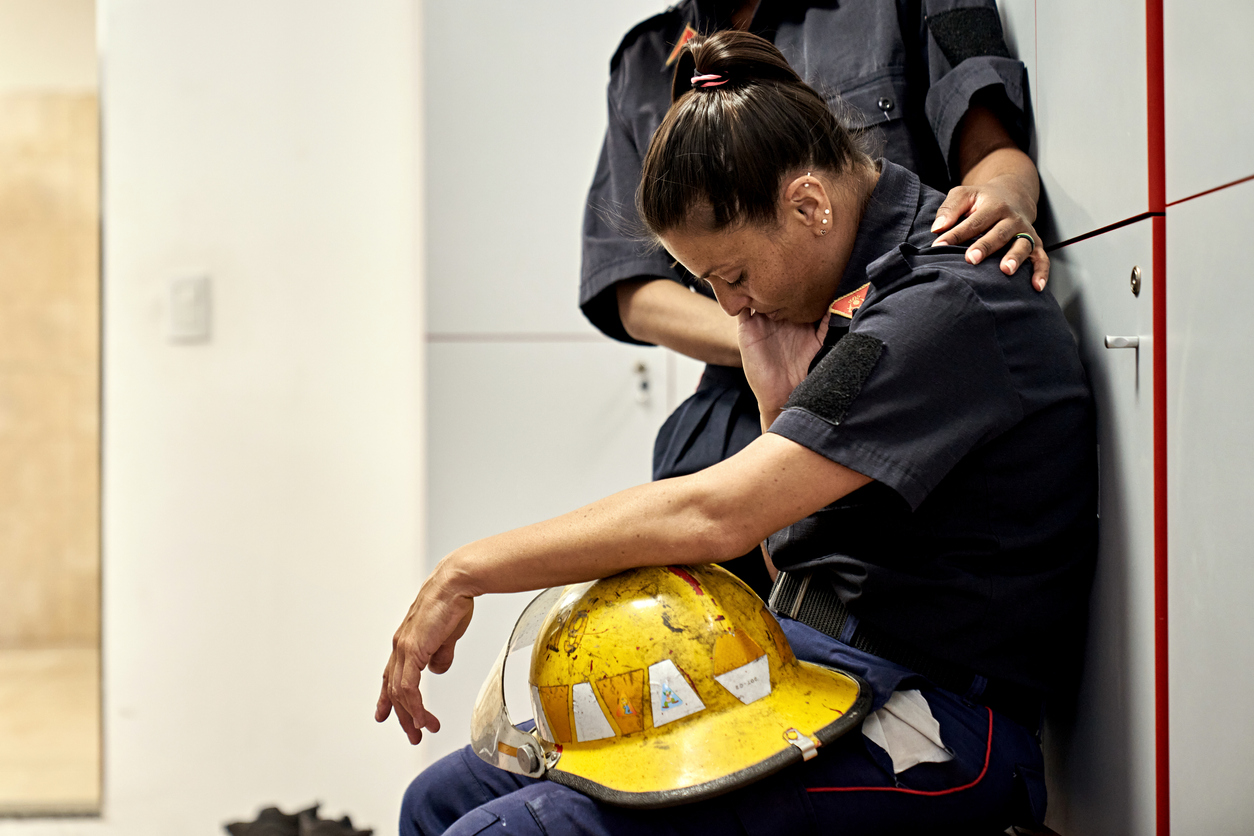
Substance abuse is alarmingly common among EMS personnel and first responders. While the extent of the problem is unclear, surveys and secondhand reports paint quite a disturbing picture.
A survey conducted by Haddock et al. in 2017 revealed that as many as 50% of respondents consumed large amounts of alcohol in the previous month. Another survey showed that 66% of correctional workers knew of an alcoholic coworker, while 22% suspected someone of having an alcohol problem.
Other studies examined the link between job-related stress among first responders and alcoholism. Among the law enforcement personnel that responded to Hurricane Katrina rescue and relief operations, there was a marked increase in daily alcohol intake from two to seven servings. Stress related to the COVID-19 pandemic also contributed significantly to the rise in alcohol consumption among first responders.
The tip of the addiction iceberg
Perhaps more distressing is that the extent of substance abuse is likely grossly underreported. Furthermore, other substances are probably involved as well. Approximately 13% of EMS respondents in one survey claimed firsthand knowledge of opioid or heroin addiction among coworkers.
An article published in Police Chief even suggests a high propensity for addiction among officers due to the higher risk of injuries requiring pain medication. The widespread availability of recreational and medicinal marijuana and tolerance to its use are significant factors.
EMS1’s editorial director, Greg Friese, feels that addiction among first responders reflects the communities they serve. For Friese, public safety personnel isn’t exempt from the higher rates of alcoholism and general tolerance toward cannabis that characterizes many communities.
Alcohol and EMS workers
For better or worse, alcohol is an integral part of first responder culture. It is a common element at retirement parties and helps take the edge off at the end of a shift. Alcohol is almost sure to be present whether dealing with a tragedy or celebrating a victory.
But there is a significant dark side to alcohol. Many of the incidents that EMS personnel deal with–including vehicular accidents, wrecks, or domestic violence complaints‒involve alcohol use.
Many supervisors and administrators are aware of the propensity for alcohol and substance abuse among EMS staff. During the recruitment interview, Vernon Heron of the Baltimore Police Department always asks applicants if they drink. Heron subsequently warns them of the high risk for alcoholism because of the trauma they will experience as part of their jobs.
As the Director of Officer Safety and Wellness at the department, Heron knows a great deal about the subject. His years in the service have given him firsthand knowledge of recruits that have progressed from social drinking to several drinks at the end of shift just to be able to sleep. He’s even seen officers become heavy drinkers after years on the job, even if they’ve never been able to stand the taste of alcohol previously.
Unfortunately, alcohol and substance abuse aren’t addressed intensively at the official level. While in-service training does cover the issue, little attention is given to the widespread use and acceptability of drinking among first responders.
Drawing the line between abuse and responsible use
The National Institute of Alcohol Abuse and Alcoholism defines intoxication as having a blood alcohol concentration of 0.08 or higher. Men typically have to consume five drinks within two hours to achieve this level, while women need to consume four drinks.
The CDC further defines “heavy drinking” as consuming 15 or more drinks over a week-long period for men. For women, the range is eight or more drinks per week. This is considerably more than the two-drink maximum for men and one for women per day.
But while these guidelines are pretty definitive, most people tend to underestimate how much they have actually drunk at any time. Furthermore, many first responders and EMS personnel feel that these rules don’t apply to them, given the extreme nature of their jobs. Consequently, having way more than two drinks at the end of a shift is largely seen as ‘normal’ even though it would constitute intoxication for other people.
Screening and assessment
Today, EMS organizations have access to many apps that can aid in screenings and self-assessments for substance use. One example is the Cordico app, which provides features that help users find substance abuse disorder therapists or get help immediately if necessary.
EMS professionals in Michigan may also take the Michigan Alcohol Screening Test (MAST) to determine their level of dependence. The Substance Abuse and Mental Health Services Administration offers many helpful and potentially life-saving resources for those severely affected by alcoholism or drug addiction.
About Provident Insurance Programs
With roots dating back to 1902, Provident Insurance Programs is a program administrator that serves paid and volunteer firefighters in addition to emergency medical responders with numerous custom-tailored insurance programs. We’ve also extended our expertise and experience to offer benefit plans and coverages to participant groups as well as Transportation Benefits. We are committed to continuing to provide superior customer service, and would be happy to speak with you to provide further information. Give us a call today at (412) 963-1200 to speak with one of our representatives.


